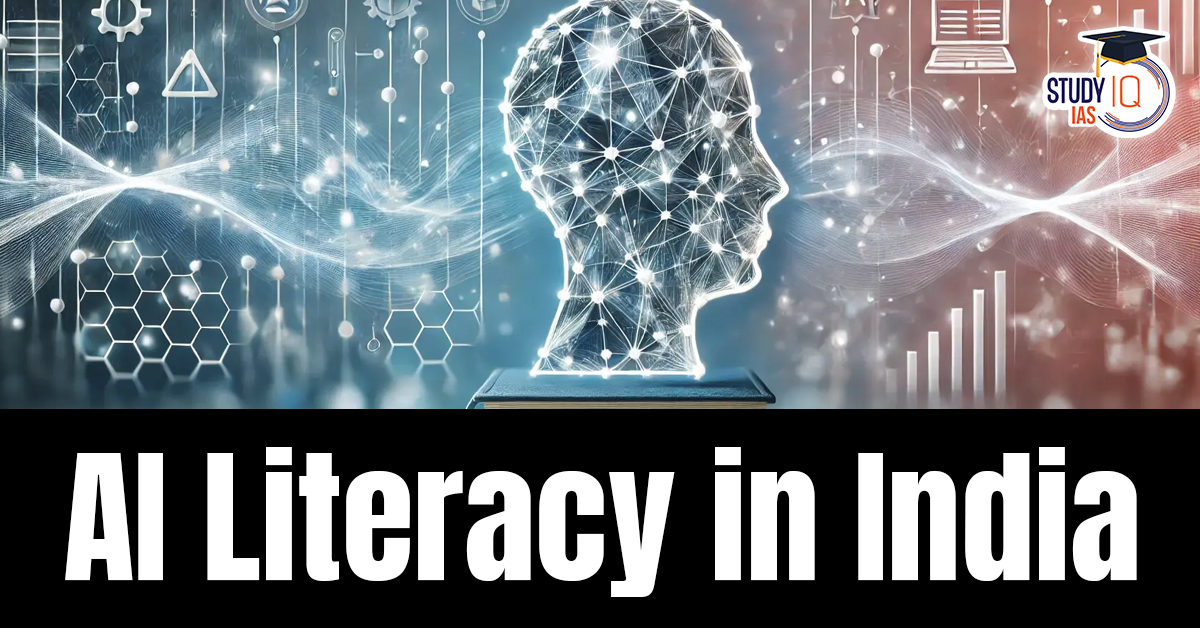Table of Contents
Context: AI literacy is crucial for India’s future competitiveness and innovation, empowering individuals to engage with AI and avoid falling behind globally.
AI Literacy: Significance
- Economic Competitiveness: AI literacy equips individuals with the skills to engage in and drive innovation, positioning India as a global leader in Artificial Intelligence rather than just a service provider.
- Job Readiness: Understanding AI enhances employability, preparing the workforce for automation and evolving job requirements.
- Empowered Decision-Making: AI literacy enables individuals to critically assess AI-generated content, recognise biases, and engage with AI tools effectively.
- Innovation and Problem-Solving: AI literacy fosters creativity and the ability to design AI-based solutions for real-world problems, boosting technological and social advancements.
- Inclusive Growth: Widespread AI literacy ensures that rural and underserved populations are not left behind in the AI revolution.
- Ethical and Responsible AI Use: Educating people about AI’s ethical implications helps prevent misuse and promotes fairness, transparency, and accountability.
Challenges in AI Literacy in India
- Lack of Integration in Education: AI and computational thinking are not widely incorporated into school and college curricula.
- Eg., Approximately 66% of Indian schools lack internet access, hindering technology integration in education
- Digital Divide: Rural and underserved communities have limited access to AI education and digital infrastructure.
- Eg., Despite a 13% growth rate, only 31% of the rural population uses the Internet, compared to 67% of urban residents.
- Skills Gap: Workforce skilling programs are industry-focused and not comprehensive enough to cover AI literacy for all professions.
- Policy and Regulatory Hurdles: The absence of a national AI literacy strategy and slow policy response hinder AI education expansion.
- Limited Public Awareness: Low understanding of AI’s role in daily life and its impact on jobs, privacy, and decision-making.
- Insufficient Research and Investment: Inadequate funding and institutional support for AI education and research.
What Needs to Be Done
- National AI Literacy Curriculum: Develop a structured K-12 AI literacy program, including computational thinking, problem-solving, and ethical AI use.
- AI Labs and Tinkering Spaces: Establish AI learning hubs in schools and universities to promote hands-on learning and experimentation.
- Workforce Reskilling: Broaden AI training programs beyond the IT sector, covering agriculture, healthcare, and other key industries.
- Public Awareness Campaigns: Educate the public on AI’s impact and empower them to engage critically with AI tools.
- Investment in Research and Development: Increase funding for AI research and foster collaboration between academia, industry, and government.
- Ensure Equity and Accessibility: Design AI literacy initiatives tailored to regional and socio-economic differences to ensure broad participation.
| Related Articles | |
| Artificial Intelligence in Education | Global Regulation Of Artificial Intelligence |
| Artificial General Intelligence | Difference Between AI and Machine Learning |


 Gutti Koya Tribals in Post-Conflict Indi...
Gutti Koya Tribals in Post-Conflict Indi...
 Research Infrastructure in India for its...
Research Infrastructure in India for its...
 Maternal Mortality Rate in India, State ...
Maternal Mortality Rate in India, State ...





















